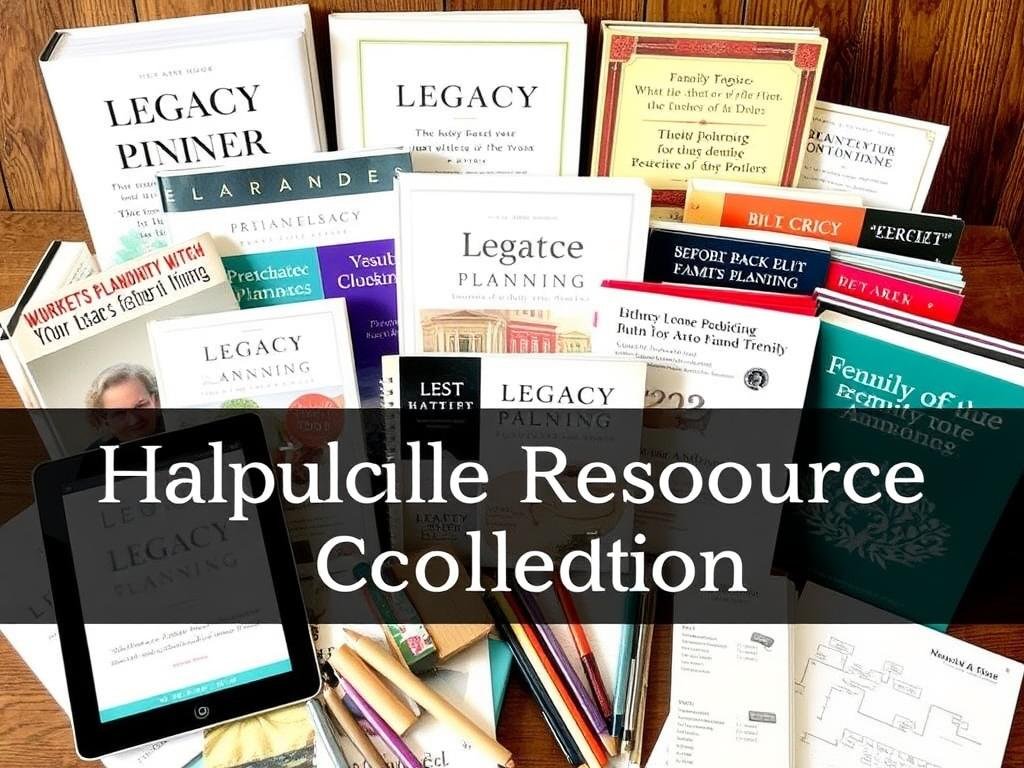If you’ve ever felt a quiet worry about the future of your family’s money, you’re not alone. Many of us think about how to protect what we have and how to pass it forward.
Nearly $124 trillion is set to change hands in the U.S. by 2048, and younger generations are shifting how they invest. That shapes choices about safe stores and growth opportunities today.
The reality is simple: inflation eats purchasing power, and a mix of holdings gives better resilience through market swings. Traditional real estate remains a steady core for many, while alternatives like precious metals, farmland, and digital coins add different strengths.
This short guide maps a practical roadmap to spot the kinds of holdings likely to support long-term goals. You’ll get clear contrasts between foundational positions and satellite ideas, plus notes on basic accounts and structures that make ownership easier.
Key Takeaways
- Diversify beyond cash to fight inflation and protect net worth.
- Real estate remains a cross-generational anchor for many portfolios.
- Include both stable stores (gold, farmland) and growth options (crypto) by risk level.
- Plan accounts and simple structures to ease long-term management.
- Current trends show younger investors favor alternatives and customization.
At a Glance: The Assets Most Likely to Outpace Inflation Today
Inflation reshapes which holdings deliver real returns year after year.
Short primer: Young investors increasingly doubt that traditional stocks and bonds alone will beat inflation. A mix of real estate, equities, precious metals, farmland, and select alternatives can broaden exposure beyond the stock market and stabilize returns when one slice lags.
Why diversification matters in an inflationary world
Spreading capital across types of assets reduces risk. When cash loses purchasing power, other holdings often keep pace or rise.
How this listicle helps you get started right now
This guide gives quick cues so beginners can get started without a full overhaul. Start with one or two small moves—add an index fund tied to the s&p 500, consider fractional real estate, or set aside a metal or farmland allocation.
| Asset | Typical Role | Why it resists inflation |
|---|---|---|
| Real estate | Income + appreciation | Rents and property values often rise with prices |
| Stocks / S&P 500 | Long-term growth | Corporate earnings can outpace inflation over a year and decade |
| Precious metals | Store of value | Demand spikes during stress and tight markets |
| Collectibles & farmland | Diversifiers | Low correlation to the stock market and steady demand |
- Mix holdings to avoid concentration in any single market.
- Keep an emergency cash buffer even as you diversify.
- Use this snapshot to choose the next practical step.
Real Estate Investing: A Cornerstone of Long-Term Wealth
Real estate has long been a practical engine for steady wealth growth. It blends a physical asset you can manage with two clear return streams: rental income and long-term appreciation.
Primary residence, rentals, and private platforms
Primary homes act as forced savings and can rise in price with local demand. Rental properties offer ongoing income plus potential price gains.
Private platforms lower the barrier to entry. Platforms like Fundrise let investors start small but may lock money for five or more years. Arrived Homes sells shares of rental properties from about $100, though popular listings can sell fast.
How real estate compounds and how to begin
Rent payments build cash flow across years while property improvements and local market shifts push appreciation.
- Start with a clear market check and realistic repair reserves.
- Use fractional platforms for easy exposure and traditional financing for direct rentals.
- Consider tax rules and depreciation; consult a tax pro for specifics.
| Holding | Primary benefit | Trade-offs |
|---|---|---|
| Primary residence | Forced savings, stability | Less liquidity, personal use limits |
| Rental property | Income + appreciation | Management, vacancies, repairs |
| Private platforms | Low entry, diversification | Illiquidity, platform fees |
Thanks to new tools, investors can choose a gradual approach and refine their estate investing plan as experience grows. For how to plan income needs from a large portfolio, see living off interest of $1M.
Farmland: Scarcity, Stability, and Strong Historical Returns
Farmland combines physical scarcity with steady demand, creating a distinct path for long-term returns.
Why it behaves differently: Farmland ties income to food production, so prices and rents often move with real demand from people and global population trends. A hypothetical $10,000 placed in farmland in 1991 would now exceed $215,000, showing multi-decade strength and lower swings than the S&P 500, gold, or many REITs.
Volatility and practical advantages
Compared with public markets, this asset class usually posts steadier performance. That steadiness comes from real-world need for crops and commodities rather than daily trading sentiment.
How accredited routes work and timing tips
Platforms like FarmTogether target accredited investors with deal-by-deal offerings. Minimums, hold periods, and quick sellouts are common, so start small and learn the cycle before scaling.
- Demand drivers: rising protein consumption and growing middle classes in parts of the world.
- Due diligence: check soil, water, operator quality, lease terms, and local market dynamics.
- Inflation sensitivity: rents and commodity-linked revenue can adjust, offering a partial hedge.
Compare and decide: Farmland can diversify a real estate-heavy plan, but expect lower liquidity and more operational checks. Consider a modest allocation, gain experience, then increase exposure as comfort grows.
Stocks and the Stock Market: Broad Exposure with Time on Your Side
Simple, repeatable actions in the stock market often beat clever timing. Index funds bundle many stocks into a single holding. That lowers fees and reduces company-specific risk.

Index funds and the S&P 500 as long-term core holdings
The s&p 500 has delivered strong long-term returns despite recessions in past years. For many investors, low-cost index funds tied to that benchmark form a reliable core.
Individual stocks vs. index funds: risk, cost, and diversification
Picking single stocks can boost returns but raises concentration risk and requires time. Index funds keep a portfolio balanced without constant trading.
- Broad-market index funds offer effortless diversification and low fees.
- Consistent contributions across years smooth volatility and improve outcomes.
- Use platforms like M1 Finance to research a fund, open an account, and automate deposits.
| Choice | Primary benefit | Trade-offs |
|---|---|---|
| Index fund (S&P 500) | Low cost, broad diversification | Market swings; limited chance to beat the market |
| Individual stock | Higher upside potential | Higher risk, more research needed |
| Sector / factor fund | Targeted exposure | Higher fees, requires timing |
| Automated contributions | Smooths volatility, enforces discipline | Requires long-term patience |
Thanks to modern brokerages, investors can start small and focus on steady growth instead of headlines. Balance this sleeve with real estate and other holdings for a resilient plan.
Precious Metals: Gold and Silver as Inflation Hedges
Precious metals often behave differently than stocks and bonds during stress.
Gold’s centuries-long track record contrasts with crypto’s short, high-growth history. Many high-net-worth people keep between 2% and 20% of wealth in precious metals as part of a broader diversification plan.
Storage choices matter. Private vaults, insured bank boxes, and offshore hubs like Singapore, New Zealand, and Austria each have trade-offs for custody, premiums, and reporting for U.S. persons.
Practical custody and allocation tips
- Consider a Gold IRA if you want metals inside an account with retirement rules.
- Check chain of custody, insured storage, jurisdiction stability, and clear exit options before buying.
- Be aware of liquidity, dealer premiums, and custody risks—documented storage beats informal arrangements.
“Metals don’t pay income, but they can preserve purchasing power when policy or market shocks occur.”
Silver adds industrial demand dynamics, so it can move with different cycles than gold. For a deeper guide on choosing metals, see a practical decision guide, and read about downsides at a balanced overview.
Collectibles with Staying Power: Art and Fine Wine
Collectibles can bridge taste and finance. Fine art and wine offer rare mixes of cultural value and financial returns that differ from stocks and tatty trends.

Art’s performance and portfolio benefits
Contemporary art posted about 13.8% annual returns from 1995–2021, versus 10.2% for the s&p 500 in the same span.
That low correlation to the stock market means art can help stabilize a diversified portfolio during equity drawdowns.
Fine wine: custody, insurance, and timing
Fine wine has outpaced the s&p 500 in certain long windows and tends to be less volatile than real estate or gold.
Platforms like Masterworks enable fractional art ownership, and Vinovest handles insured, climate-controlled storage for bottles.
| Collectible | Typical benefit | Practical trade-offs |
|---|---|---|
| Blue-chip art | Low correlation, strong long-run returns | High fees, authentication needs, illiquid |
| Fine wine | Steady appreciation, storage income protection | Provenance checks, cellar costs, slower sales |
| Fractional platforms | Lower entry, access to iconic works | Platform fees, secondary market limits |
- Do due diligence on provenance and authenticity.
- Diversify across artists, vintages, and styles to lower concentration risk.
- Expect holding periods of several years and plan liquidity needs for money tied to these items.
Small Businesses and Private Equity: Higher Risk, Potentially Higher Returns
Direct business investments reward long-term commitment and careful underwriting more than quick trades.
Private equity and small-business investing has outpaced public markets in many periods, but it comes with less liquidity, higher fees, and tougher due diligence.
Revenue share models and lockup periods
Some platforms offer revenue share deals that target 10%–25% returns with multi-year lockups. Mainvest and similar sites show how payouts tie to company income.
“These investments can amplify returns, but require multi-year commitments and active risk management.”
How alternatives fit into a diversified portfolio
Use private deals as a satellite sleeve alongside stocks and real estate. They can boost income and growth, yet they demand close vetting of cash flow, operator quality, and fees.
| Type | Typical target | Key trade-offs |
|---|---|---|
| Revenue share | 10%–25% return | Revenue risk, periodic payouts, lockups |
| Private equity fund | High long-term growth | High fees, long time horizon |
| Direct small business | Owner income + equity upside | Concentration risk, liquidity limits |
- Start small and diversify across multiple deals.
- Match exposure to your time horizon and liquidity needs.
- Vet operators, check minimums, and beware of capital calls.
Bitcoin and Digital Assets: Volatile but Transformational
Digital coins can reward patience, but they test nerves when markets tumble.
Bitcoin’s track record includes spectacular multi-year returns and deep drawdowns. For example, calendar gains of 1,318% in 2017 were followed by a -72.6% decline in 2018. That pattern makes cycle awareness and position sizing critical.
Cycle awareness, custody choices, and position sizing
Learn how crypto cycles work—booms and busts across year-to-year stretches—and why patience matters. Many investors use a HODL approach through large swings.
Custody matters: exchange accounts like Kraken offer convenience, while hardware wallets such as Ledger Nano X give greater security. Choose a recovery plan and avoid keeping large sums on exchanges long-term.
Open an account, fund it with small transfers, and place limit orders to control costs. Track trades and transfers for tax reporting and staking rules in your jurisdiction.
“Treat crypto as a high-volatility sleeve: small allocation, clear rules, and strict security.”
- Set a modest allocation to add asymmetric upside without risking core goals.
- Rebalance into and out of strength; avoid emotional overtrading.
- Know that crypto is a global, 24/7 market driven by sentiment.
| Topic | Practical tip | Why it matters |
|---|---|---|
| Position sizing | Limit to a small percentage of portfolio | Reduces chance of catastrophic losses |
| Custody | Use hardware + exchange combo | Balances security and liquidity |
| Tax & records | Log trades, transfers, and staking income | Prevents surprises at tax time |
Final note: Treat Bitcoin as a distinct asset that behaves unlike stocks or the stock market. Set rules you can follow when volatility spikes and protect your money with basic security hygiene.
High-Yield Savings Accounts: Where Cash Belongs in a Generational Plan
Storing money in the right place gives you freedom when surprises arrive.
Many Americans lack $500 in liquid cash. A high-yield savings account (HYSA) protects short-term needs while earning a sensible interest rate and staying FDIC insured.
Use an HYSA as your emergency reserve. Aim for 3–6 months of living costs so you don’t sell long-term holdings in a crisis. Platforms like Raisin help compare HYSA options, often with low minimums and no monthly fees.
- Separate accounts: keep a dedicated bank account for reserves to avoid spending temptation.
- Compare rates: review interest and fees across banks and confirm FDIC coverage.
- Automatic saving: set monthly transfers to build the reserve through the year.
| Feature | Why it matters | Practical tip |
|---|---|---|
| Interest rate | Earnings reduce inflation drag | Choose sustainably higher yields, not just promos |
| FDIC insurance | Protects your money up to limits | Confirm coverage and bank name |
| Fees & minimums | Costs can erode returns | Avoid monthly fees and high balance rules |
Remember: cash preserves optionality and stability but is not a long-run growth vehicle. Keep liquidity first, then invest surplus into long-horizon holdings.
What assets hold value over generations?
A durable plan blends core, time-tested positions with smaller, higher-upside choices.

Core pillars to build on
Real estate, broadly diversified stocks (including index funds such as the S&P 500), farmland, and precious metals form the backbone of many family plans.
These holdings tend to produce income, resist inflation, and compound over long stretches of time.
Satellite positions for growth and diversification
Consider collectibles, small businesses, private equity, and digital coins like Bitcoin as satellite sleeves.
They can boost returns and lower correlation to the public market, but expect higher volatility and lower liquidity.
Rebalancing and practical sizing
Rebalance annually to harvest gains and limit drift. Keep a short-term cash buffer, then deploy excess into long-horizon investment ideas.
Match sizing to goals, net worth, and risk tolerance: make core holdings the largest slice, satellites modest, and income-producing rentals or dividends a steady support for multi-decade growth.
- Automate deposits and set simple rebalancing rules.
- Review the plan each year and adjust for inflation and life changes.
| Role | Typical benefit | Trade-off |
|---|---|---|
| Core (real estate, stocks) | Stability, long-term growth | Market cycles, capital needs |
| Satellite (collectibles, private equity) | Diversification, upside | Illiquidity, specialized due diligence |
| Cash | Resilience, optionality | Low long-term returns |
“Diversify, think in decades, and review annually.”
The Great Wealth Transfer: How Younger Investors Are Shaping Portfolios
A seismic transfer of wealth is nudging how younger people design portfolios and pick products.
About $124 trillion will change hands by 2048, with roughly $106 trillion moving to Gen X, Millennials, and Gen Z. That shift is tangible in survey results: 72% of investors aged 21–43 say traditional stocks and bonds alone won’t deliver above-average returns.
Rising interest in alternatives, sustainability, and customization
Many younger investors prefer crypto, private equity, and direct investing. They also weigh ESG when choosing managers more than older cohorts.
Customization is growing too. Direct indexing, thematic sleeves, and flexible platforms let people tailor exposure and tax lots. This trend fuels new products and lowers minimums.
Real estate as a cross-generational constant
Despite varied tastes, real estate remains a shared favorite. Both older and younger groups see rental income and housing as anchors in a mixed plan.
Expect more rental exposure, private market access, and digital platforms as tools improve and fees fall. Family governance and investor education will matter more as stewardship transfers.
“This handoff is not just money moving—it’s a change in how people want to manage and influence their capital.”
- Understand how the largest transfer in U.S. history reshapes product demand.
- Note higher interest in impact strategies and direct control among younger investors.
- Real estate stays central while satellites shift toward private and digital offerings.
| Trend | Why it matters | Likely outcome |
|---|---|---|
| Alternatives | Seek higher returns and diversification | More flows to private equity, crypto, and direct deals |
| Sustainability (ESG) | Values influence manager selection | Increased due diligence and themed funds |
| Real estate & rental | Income + tangible shelter demand | Continued cross-age allocation and product innovation |
| Customization | Desire for tailored exposure | Growth in direct indexing and modular portfolios |
Conclusion
A step-by-step approach, like choosing core building blocks and adding small satellites, is the clearest way to raise net worth with less stress.
Get started by automating deposits into an S&P 500 index fund and a real estate exposure. Keep a practical emergency account, then direct surplus money into long-horizon investments that match your goals.
Revisit your portfolio each year to rebalance, right-size risk, and trim or add positions. Use fractional platforms to invest real estate without large minimums and blend estate investing with broad stocks for steady compound gains.
Pick one small way to improve this week and stick to it. For background on how wealth shifts by age and who benefits next, see wealth by generation.
FAQ
Which core pillars tend to grow net worth across decades?
Real estate, broad equities like index funds tracking the S&P 500, productive farmland, and a measured allocation to precious metals form a durable foundation. These categories combine capital appreciation, income potential, and partial protection from inflation when held and rebalanced over time.
How important is diversification for long-term plans?
Diversification reduces reliance on any single market or economic cycle. Mixing property, stocks, cash equivalents, alternatives, and collectibles smooths returns and lowers portfolio volatility. Rebalancing annually or when allocations drift helps lock in gains and manage risk.
What role does rental real estate play compared with a primary residence?
A primary home builds equity and offers stability, but rental properties generate ongoing income and stronger wealth-building potential through leverage and cash flow. Both can complement each other depending on goals and tax strategies.
Can fractional real estate platforms be a good entry point?
Yes. Fractional platforms lower the capital barrier, let investors access commercial or institutional-grade deals, and offer diversification across geographies. Review fees, liquidity, and sponsor track record before investing.
Why is farmland considered less volatile than stocks or REITs?
Farmland benefits from finite supply, steady demand for food, long-term leases, and cash rents tied to commodity trends. These factors create lower price volatility and reliable income streams compared with public equities and some REIT sectors.
Are farmland investments limited to accredited investors?
Many direct farmland funds require accredited status, but public farmland REITs and some crowdfunding platforms offer retail access. Understand lockup terms, management fees, and operating risks before committing capital.
Why favor index funds like the S&P 500 for multigenerational strategies?
Index funds provide low-cost, broad market exposure, compounding returns over decades, and automatic diversification across sectors. They typically outperform most active managers after fees when held long term.
When should investors pick individual stocks instead of funds?
Consider individual stocks only if you have time to research, a high risk tolerance, and conviction in a company’s long-term edge. Keep positions small within a diversified portfolio to avoid concentration risk and higher volatility.
How do gold and silver fit into a protection strategy?
Precious metals often act as hedges against currency debasement and extreme market stress. Allocate a modest percentage—commonly 5–10%—and decide on form (physical, ETFs, or allocated storage) based on liquidity and custody preferences.
Should collectors expect the same returns as stocks?
Collectibles like art and fine wine can outperform in niche cases and offer low correlation to equities, but they require expertise, custody, insurance, and often long holding periods. Use them as satellite positions rather than core allocations.
How do private businesses and private equity fit a family plan?
They can deliver outsized returns but carry higher illiquidity and operational risk. Consider revenue-share models, minority stakes, or syndicates to limit exposure. Keep these as a smaller portion of the portfolio unless you actively manage the venture.
Is Bitcoin suitable for a generational portfolio?
Bitcoin may offer transformational upside but shows high volatility. If included, size positions conservatively, use secure custody solutions, and treat crypto as a high-risk satellite allocation rather than a primary store of wealth.
Where does cash belong in a long-term plan?
High-yield savings and short-term accounts are essential for emergency reserves, near-term goals, and liquidity. Keep three to twelve months of living costs accessible while investing surplus for long-term growth.
How often should families rebalance to stay ahead of inflation?
Annual rebalancing or rebalancing when allocations shift by 5–10% keeps risk in check and enforces a buy-low, sell-high discipline. Combine rebalancing with tax-aware moves to minimize capital gains impact.
How are younger investors changing portfolio construction?
Younger investors increasingly favor alternatives, sustainability-focused funds, fractional ownership, and customization through robo-advisors and platforms. Real estate remains a steady preference across generations for tangible income and inflation resilience.
What practical first steps should someone take to build generational wealth?
Start with an emergency fund, pay down high-interest debt, invest consistently in low-cost index funds, and consider adding rental or fractional real estate for income. Educate yourself on taxes, estate planning, and diversify into conservative alternatives as net worth grows.













